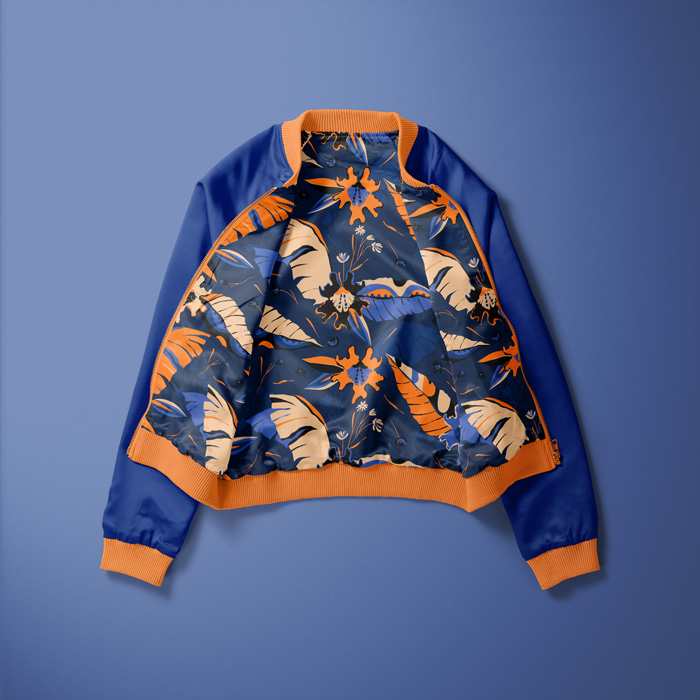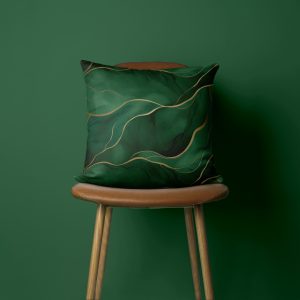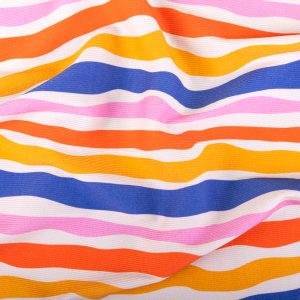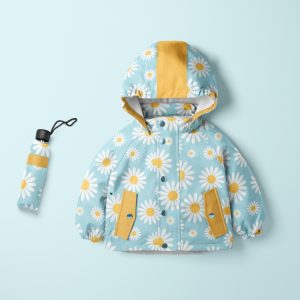Dreaming of owning your own clothing bard can be a fascinating vision for many people. However, transitioning from dream to reality requires not only creativity but also the right knowledge and planning. In this article, we will outline the key steps to create your own clothing brand, focusing on the crucial aspect of choosing fabrics and necessary materials.
Table of Content
- Define your brand
- Market Research
- Designing
- Choosing Fabrics and Materials
- Production
- Marketing and Sales
- Summary
Define your brand
Defining your clothing brand is a crucial step in the process of creating a fashion business. This is where you begin to build the brand identity that will set its direction, values and uniqueness in the market.
Firstly, you need to consider the values you want your brand to represent. Do you want to be perceived as a company promoting sustainable fashion that cares for the environment? Or perhaps you prioritize creating luxurious clothes that are distinguished by their elegance and prestige? Regardless of your choice, these values will permeate through all actions and decisions made in the context of the brand.
The next important element is defining your target audience. Who are the people for whom we design our clothes? Are they young individuals seeking comfortable and fashionable everyday wear or perhaps individuals interested in exclusive collections for special occasions?Understanding the needs and preferences of our target audience will help us tailor our offer and communication to better meet customers’ expectations.
Another aspect is determining the style you want to represent. Does our brand lean towards street fashion, where loose fits and unconventional patterns dominate? Or does it aspire to a more elegant and classic style that never goes out of fashion? There is also the option to focus on sportswear, which is not only functional but also trendy and visually appealing. The choice of style is crucial because it will not only influence our designs but also the choice of fabrics and materials.
Ultimately, it is important that this entire brand concept is reflected not only in designs but also in the choice of fabrics. If we focus on sustainable fashion, we should choose ecological fabrics such as organic cotton or linen. However, if our goal is to create luxury clothing, we should opt for high-quality materials such as silk or cashmere. Complementing the brand’s character through careful selection of fabrics is crucial for building a consistent and attractive image of a clothing brand.

Market Research
Before starting to design your clothes, it’s crucial to conduct in-depth market analysis. These studies will allow us to better understand the needs and preferences of our target audience and identify current trends in the fashion industry.
The first step is to understand which styles, colors, patterns and fits are currently popular among our target audience. Are they loose and informal clothes or rather elegant and classic creations? Are customers interestes in sportswear, or do they prefer more traditional styles? Market research, including customer feedback analysis, fashion trend research, and observation of consumer behavior, will help us answer these questions.
Competitor analysis is also crucial part of market research. It’s important to identify similar clothing brand operating in the market and analyze their offer, marketing strategies and positioning. This will help us identify gaps in the market offering and unique features of our brand that will allow us to stand out from the competition.
However, despite competitor analysis, it’s crucial to remain true to our own vision and avoid directly copying ideas. Our brand should be authentic and reflect our values and individual design style. Therefore, although competitor analysis can be inspiring and helpful, we should not copy or imitate others’ ideas but create our own unique offer.
Designing
The process of designing and prototyping is a crucial stage in creating your own clothing brand. This is where our ideas and visions take on concrete shapes, and our clothes begin to take on a real form. It is also a moment where the quality of cooperation with an experienced designer can bring many benefits, especially if we do not have experience in clothing design ourselves.
Collaborating with a professional designer can help us translate our concepts on paper into concrete clothing designs. The designer will be able to use their knowledge and experience to adapt our ideas to the technical requirements of clothing production and ensure that our clothes are both visually appealing and functional.
During the design process, it’s also important to consider the character of our brand in all our projects. Each garment design should reflect the values and style of our brand, allowing us to build a coherent and recognizable image in the market.
Choosing Fabrics and Materials
Choosing the right fabrics and materials is the foundation of creating high-quality garments and is a key element in building the success of a clothing brand. When choosing fabrics, we should consider not only their aesthetics but also functionality, durability, and wearing comfort to ensure customer satisfaction and loyalty to the brand.
One type of fabric worth considering is cotton. It is a natural material known for its softness and pleasant feel. Cotton is an excellent choice for everyday wear such as shirts, T-shirts, or trousers because it is breathable and allows air circulation, providing comfort even on warm days.
Another natural material is linen. Linen is lightweight, breathable, and perfect for summer clothing such as dresses or trousers. It has a delicate, natural appearance and is exceptionally gentle on the skin, making it an excellent choice for summer clothes.
If we aim to create winter garments, wool is worth considering. Wool is not only very warm but also durable and resistant to deformation. It is an excellent choice for sweaters, coats, and other winter clothes designed to provide warmth and comfort on colder days.
The last type of fabric worth mentioning is polyester. It is a synthetic material known for its easy maintenance and durability. Polyester is often used in sportswear and outdoor clothing production because it performs well in intensive conditions, providing durability and resistance to damage.
Production
After carefully selecting the appropriate fabrics and materials, it’s time to start production. This is a stage that requires careful organization, attention to detail, and maintaining high quality standards, all of which contribute to the success of a clothing brand.
One of the key decisions to make at this stage is choosing the production location. We can opt for local or foreign production, depending on our preferences, budget, and business strategy. Local production may be advantageous in terms of control over the production process, faster delivery times, and supporting the local economy. On the other hand, foreign production may be more cost-effective but requires careful analysis of suppliers and quality control.
Maintaining high quality standards during production is also essential. Regular quality control at every stage of production is crucial to ensure that our garments meet customer expectations and comply with our standards. Quality control includes checking finishing, fit, seam quality, and durability of materials used.
Furthermore, it’s also important to ensure an ethical and sustainable approach to clothing production. When choosing suppliers and manufacturing facilities, it’s worth checking whether they adhere to appropriate labor standards, pay fair wages to workers, and care for the natural environment.
Marketing and Sales
After completing the production process, it’s crucial to focus on promoting and selling your garments. To reach as many potential customers as possible, it’s worth using various marketing channels and creating a functional website or online store.

The first step is to leverage the potential of social media. Platforms such as Facebook, Instagram, Twitter, or Pinterest are excellent tools for promoting your products. Regularly post attractive content, such as product photos, stylizations, or stories related to your brand. Build engagement by interacting with users, responding to comments, and reacting to feedback. You can also consider using paid ads to reach a wider audience.
Another effective promotional tool is working with influencers. Collaborating with individuals with a large reach among your target audience can significantly increase the visibility of your brand. Offer influencers cooperation, for example, by sending them free product samples in exchange for promotion on their social media channels.
Don’t forget about traditional advertising methods such as flyers, posters, or newspaper ads. Although they may seem less effective in the digital age, they can still attract the attention of potential customers, especially if they are targeted at a specific target audience.
Finally, a key element of sales is having a functional website or online store. Your website should be visually appealing, easy to navigate, and contain all the necessary information about your products, return policy, and contact information. Make sure your website is optimized for mobile devices as more and more people are shopping using smartphones and tablets.
Summary
Creating your own clothing brand is an exciting but demanding process. The key to success is proper planning, defining your brand, and carefully choosing fabrics and materials. Be original, bold, and consistent in realizing your vision, and your clothing brand can become a true success in the fashion market.





